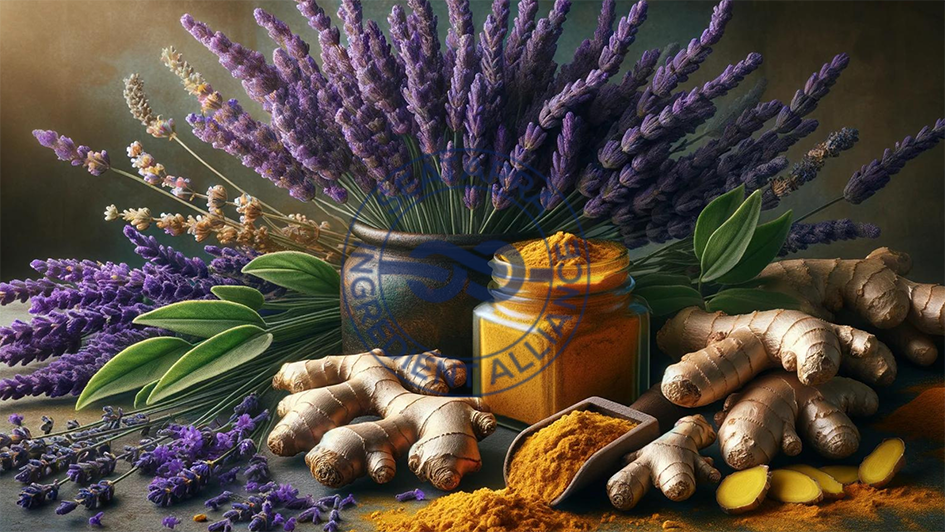
Nature’s Pain Relievers: Top 5 Plants for Easing Discomfort
In the pursuit of wellness, an increasing number of people are seeking remedies that align with nature’s rhythm, embodying the essence of holistic healing. Amid this resurgence of traditional wisdom, the power of plants as natural pain relievers stands out, offering solace and relief without the reliance on synthetic pharmaceuticals. This exploration delves deeper into the realm of botanicals, emphasizing not just their efficacy but their role in a balanced approach to health and well-being.
The Healing Virtues of Plants
Plants have been the cornerstone of medicinal practices across cultures and epochs, their healing virtues documented in ancient texts and passed down through generations. Beyond their immediate analgesic and anti-inflammatory properties, these natural wonders carry complex biochemical profiles that interact with our bodies in multifaceted ways, often addressing the underlying conditions that contribute to pain, such as inflammation, oxidative stress, and tension.
Expanded Insights into Natural Pain Relievers
Building on the foundation of the top five plants for easing discomfort, it’s important to recognize the breadth and depth of the botanical world in offering relief and healing. Each plant, with its unique properties, contributes to a diverse arsenal against pain, encouraging a personalized and integrative approach to pain management.
- Willow Bark (Salix Alba)
Willow bark’s use dates back to the time of Hippocrates, when individuals chewed on the bark to reduce fever and inflammation. Today, it’s valued for its broad applicability in treating pain, from minor aches to more chronic conditions, showcasing the enduring relevance of natural remedies in modern health practices.
- Turmeric (Curcuma Longa)
Turmeric’s curcumin content represents a gold standard in natural anti-inflammatory compounds, with studies suggesting its potential to match the effectiveness of some anti-inflammatory drugs, without the side effects. Its role in pain relief is a testament to the power of dietary phytochemicals in influencing health and wellness.
- Ginger (Zingiber Officinale)
Ginger’s therapeutic range extends beyond the kitchen, acting as a potent anti-inflammatory agent that rivals over-the-counter pain relievers. Its ability to alleviate menstrual pain, in particular, offers a natural alternative for millions seeking relief from this monthly discomfort, highlighting the personalized nature of plant-based healing.
- Lavender (Lavandula angustifolia)
Lavender’s application in pain relief is a beautiful example of the sensory pathways through which plants can influence well-being. Its calming scent not only soothes the mind but also physically eases pain, illustrating the interconnectedness of emotional and physical health.
- Peppermint (Mentha piperita)
Peppermint’s cooling sensation is instantly recognizable, offering immediate relief for topical discomfort. Beyond this, its internal use for digestive pain underscores the importance of gut health in overall well-being, promoting a holistic view of pain management that encompasses dietary habits.
Incorporating Plant-Based Remedies for Comprehensive Care
Adopting a plant-based approach to pain relief requires mindfulness and intention. It involves more than just reaching for a herb in moments of discomfort; it’s about cultivating a lifestyle that integrates these natural allies into daily practices, from diet and supplementation to stress management and physical activity.
- Creating a Healing Environment
The spaces we inhabit can significantly influence our healing processes. Incorporating plants and their extracts into our homes and routines—through aromatherapy, healing gardens, and culinary experiments—can create environments that support wellness and mitigate pain.
- Synergistic Combinations
Often, the combined use of these plants can offer synergistic benefits, enhancing their individual effects. For instance, the concomitant use of turmeric and black pepper can increase the bioavailability of curcumin, exemplifying how strategic combinations can optimize healing outcomes.
- Mindful Integration into Daily Routines
Mindfulness in consumption and application ensures that the use of these plants aligns with our body’s needs and rhythms. This might mean choosing teas or supplements based on current ailments, incorporating anti-inflammatory spices into meals for preventative care, or using topical applications for acute discomfort.
Navigating the Path to Wellness with Professional Guidance
While the allure of natural remedies is strong, navigating their use responsibly is paramount. Consulting healthcare professionals, particularly those versed in integrative medicine, can provide personalized guidance, ensuring that these plant-based strategies complement existing treatments and address individual health profiles.
Conclusion
The journey toward harnessing nature’s pain relievers is a testament to the enduring wisdom of the natural world and its capacity to nurture and heal. As we rediscover and integrate these ancient remedies into our modern lives, we open ourselves to a more balanced and harmonious approach to health—one that honors the complexity of the human body and its intrinsic connection to nature. This exploration of the top five plants for easing discomfort, along with a deeper understanding of the principles behind plant-based healing, illuminates a path to wellness that is both enriching and empowering, reminding us that in the heart of nature lies potent medicine for those who seek it.
By fostering a relationship with these botanical allies, we not only address the symptoms of pain but also embrace a holistic view of health that nurtures our entire being. This approach encourages us to live in harmony with the natural cycles, to nourish our bodies with what the earth provides, and to cultivate well-being in a way that is sustainable, gentle, and deeply rooted in the wisdom of the earth.



